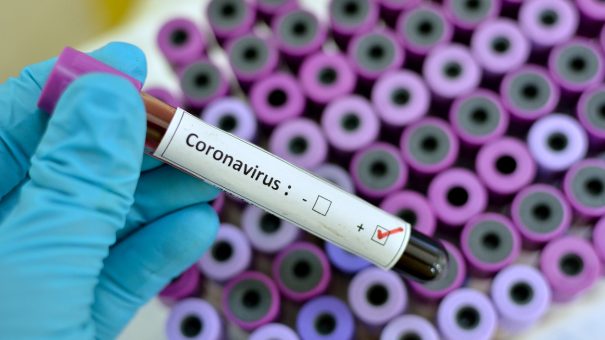Labrador Diagnostics has filed a lawsuit in the United States District Court for the District of Delaware against BioFire Diagnostics, a company that makes medical testing equipment and most recently, developed a test for the new coronavirus. The lawsuit alleges patent infringement of two of Labrador’s patents related to testing the presence of substances in bodily fluids. Labrador purchased these, and other, original Theranos’ patents after the failed blood-testing startup sold its patent portfolio to Fortress Investment Group in 2018.
One of the Theranos patents, United States Patent No. 8,283,155, teaches point-of-care fluidic systems and uses thereof. The patent describes a generic architecture for a machine that automates testing for the presence of substances in bodily fluids. The system includes a test device and a reader device. The test device contains both the patient’s bodily fluid to be tested and the reactants required to perform the test. However, no particular reactants, other than generally an immunoassay and nucleic acid reagents, or bodily fluids are disclosed. The reader device triggers the chemical reactions necessary to perform the test and reports the results. Again, however, no particular testing protocol is disclosed.
The other Theranos patent-in-suit, United States Patent No, 10,533,994, teaches systems and methods of sample processing and fluid control in a fluidic system. The system generally comprises a cartridge for sample collection and assaying and a reader assembly for detection of the presence or absence of the analyte and communication of the same. Again, no particular reactants or bodily samples are disclosed, nor are any reaction types. Indeed, the reactant is described as something that “reacts with the analyte to yield a signal indicative of the presence of the analyte.”
A working prototype or actual use of an invention is not needed to obtain a patent. In this way, your technology need not necessarily work in order to obtain a patent. This is how Theranos managed to obtain numerous patents regardless of its famed inability to produce functioning technology. Indeed, all that is needed to obtain a patent is a novel, non-obvious invention. In addition, a patent document must sufficiently describe the technology on which a patent is sought by disclosing the technologic knowledge upon which the patent is based and demonstrating that the inventor was in possession of the invention that is claimed at the time of filing.
The defendant-in-suit, BioFire Diagnostics, offer a BioFire Filmarray machine that automates detection of a variety of pathogens. Labrador claims that each of BioFire’s FilmArray devices, including the accompanying pouches and software, infringe its patents. Most recently, BioFire added coronavirus to the slate of pathogens capable of detection. Prior to the initiation of this litigation, the medical diagnostic supply company hoped to make this test publicly available to customers by the end of March.
After filing its lawsuit last week, a slew of bad press fell upon Labrador, including multiple articles referring to it as a “patent troll” and “tone deaf” given the recent coronavirus crisis. As such, earlier this week, the small firm announced it would grant royalty-free licenses to companies developing COVID-19 tests. The company also claims that it was unaware that BioFire was developing a coronavirus test at the time the lawsuit was filed. Nonetheless, Labrador appears to be intending to proceed with the lawsuit as no notice of dismissal has been filed.

